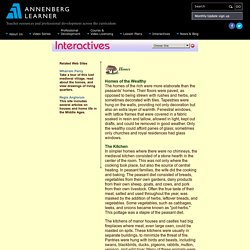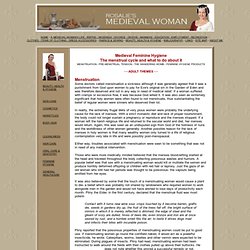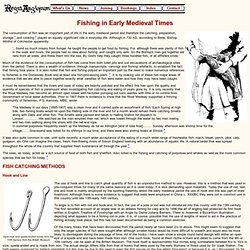

How To Sharpen Swords A Beginners Guide. What follows are some basic techniques you can use to sharpen swords.

While in this day and age, a sword doesn't have to be sharp to be classed as battle ready or functional, personally I prefer my swords to be sharp.. And if you prefer yours to be sharp too, the following guide will help you transform a blunt sword into a sharp one WITHOUT ruining the geometry or the temper (or losing any fingers in the process)... But before we begin with this technique, some general sword sharpening pointers (pardon the pun).. The Basic Do's and Don'ts of Sword Sharpening DON'T attempt to sharpen swords that are antiques leave that to the experts, otherwise you will almost certainly destroy their value. What You Will Need to Sharpen Your Sword At a bare minimum, you will need: 1) A sword :-) 2) A metal file 3) A whetstone 4) Oil for the whetstone 5) 3M 400 Grit Emery paper 6) Some paper (to wipe stuff with) 7) And a block of wood 8) Some patience 9) And some elbow grease...
Stage One Stage Two. Call for Papers – Death, law and property in Medieval Europe. Call for Papers Conference "Preparing for Death in Medieval and Early Medieval Europe"Helsinki, 14-15 March 2013 In medieval and early modern Europe society, the Grim Reaper, death, was a recurrent guest.

Leaving emotional aspects aside, the omnipresence of death required people to prepare for the possibility of dying. The religious worldview revolved around thought of salvation based on individual merit – sins and good deeds. Souls were destined either to heaven or hell, depending on how the individual had behaved during life. Medieval Life - Housing. More About Homes. Homes of the Wealthy The homes of the rich were more elaborate than the peasants' homes.

Their floors were paved, as opposed to being strewn with rushes and herbs, and sometimes decorated with tiles. Tapestries were hung on the walls, providing not only decoration but also an extra layer of warmth. Fenestral windows, with lattice frames that were covered in a fabric soaked in resin and tallow, allowed in light, kept out drafts, and could be removed in good weather. Only the wealthy could afford panes of glass; sometimes only churches and royal residences had glass windows. La vie quotidienne.
La vie quotidienne au Moyen Age. How to Heal a Bruise: 7 Steps. Categories: Skin Conditions Recent edits by: Nicholas, Mirain, Cinderheart In other languages: Deutsch: Wie man einen Bluterguss heilt, Español: Cómo sanar un moretón, Italiano: Come Curare una Contusione, Português: Como Curar uma Contusão, Français: Comment guérir un bleu, Русский: лечить синяк, 中文: 治愈伤口, Nederlands: Een blauwe plek behandelen Ad.

Medicine in the Middle Ages. Herbs for infected wounds - Herbalism Forum. Without doubt, garlic is an herb that has been used for thousands of years for both culinary and medicinal purposes.

And it was used in England. Check out this website: Garlic which states the following: This is probably the best known herb in the world for its medicinal and culinary uses. It is a member of the Lily family, one of its closest relatives being the onion. The English name for Garlic originates back to Anglo-Saxon times, being derived from gar (a spear) and lac (a plant). m3240076_WildernessRemoteFirstAidReferenceGuide. Basic Survival Medicine - Wounds. An interruption of the skin's integrity characterizes wounds.

Gastronomie médiévale à l'exposition virtuelle de la Bibliotheque nationale de France. Medieval travel food. Femininehygiene. Medieval Feminine Hygiene The menstrual cycle and what to do about it MENSTRUATION - PRE-MENSTRUAL TENSION - THE WANDERING WOMB - FEMININE HYGIENE PRODUCTS Menstruation Some doctors called menstruation a sickness although it was generally agreed that it was a punishment from God upon women to pay for Eve's original sin in the Garden of Eden and was therefore deserved and not in any way in need of medical relief.

If a woman suffered with cramps or excessive flow, it was because God willed it. It was also seen as extremely significant that holy women were often found to not menstruate, thus substantiating the belief of regular women were sinners who deserved their lot. In reality, the extremely frugal diets of very pious women were probably the underlying cause for the lack of menses. Anglo-Saxon and Viking Crafts - Fishing. The consumption of fish was an important part of life in the early medieval period and therefore the catching, preparation, storage 1 and cooking 2 played an equally significant role in everyday life.

Although in 730 AD, according to Bede, Bishop Winfrid of Colchester apparently: '...found so much misery from hunger, he taught the people to get food by fishing. For, although there was plenty of fish in the seas and rivers, the people had no idea about fishing, and caught only eels. So the Bishop's men got together eel nets from all sides. and threw them into the sea. By God's help they caught three hundred fish, of all different kinds.' Much of the evidence for the consumption of fish has come from both toilet pits and soil excavations of archæological sites from the period.